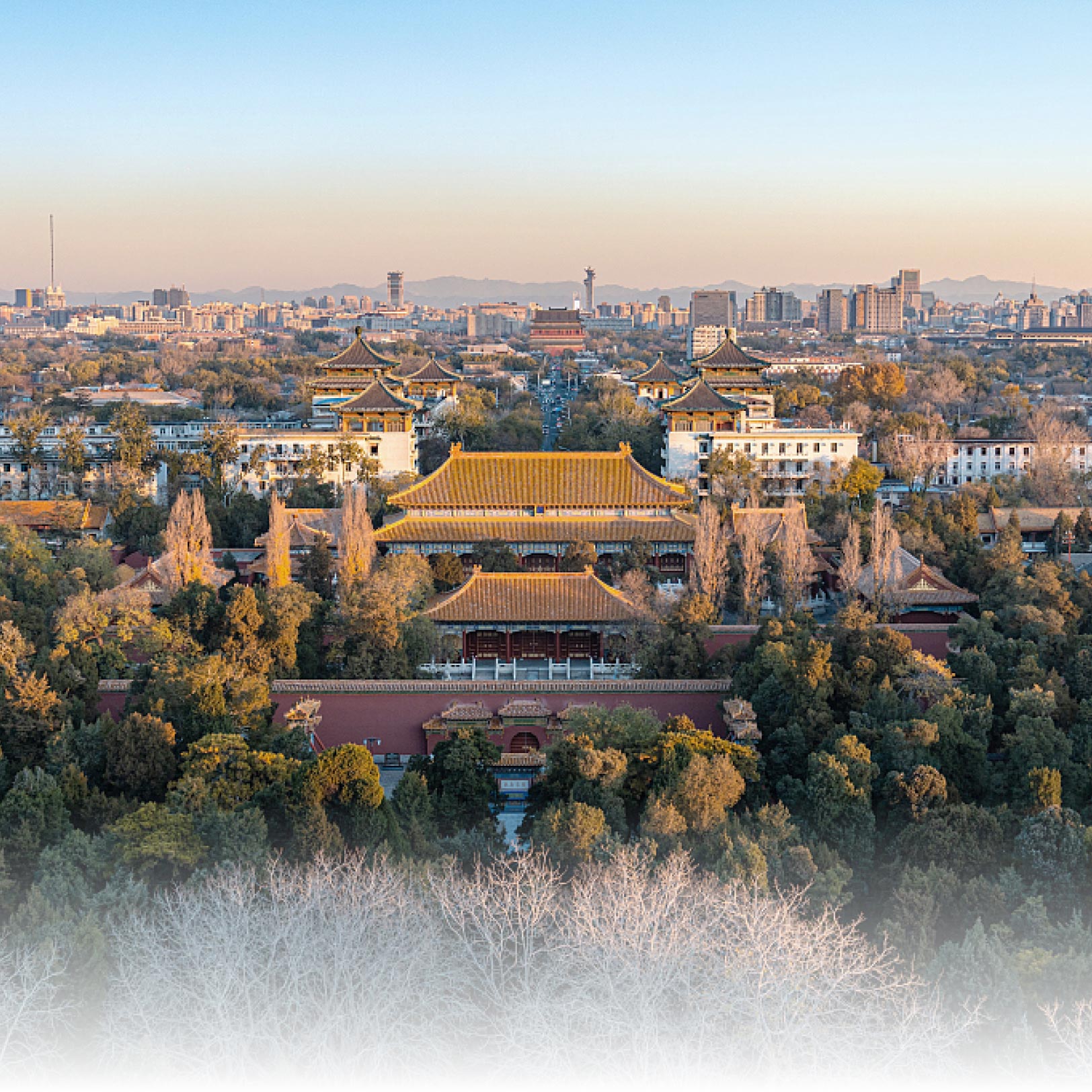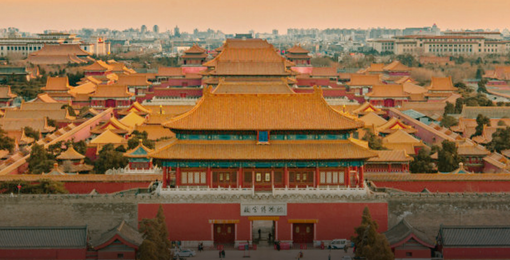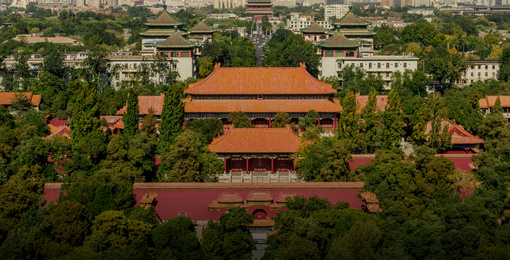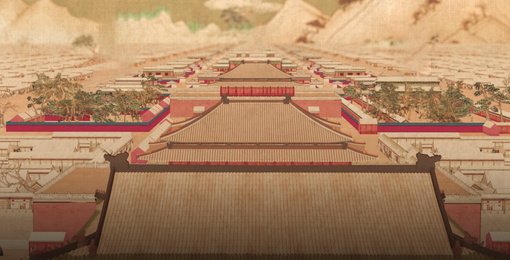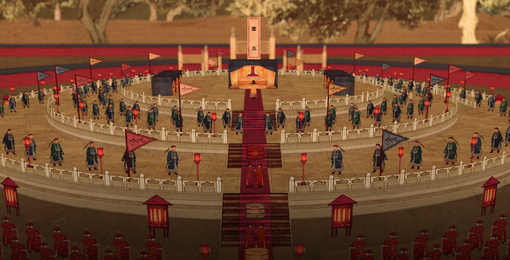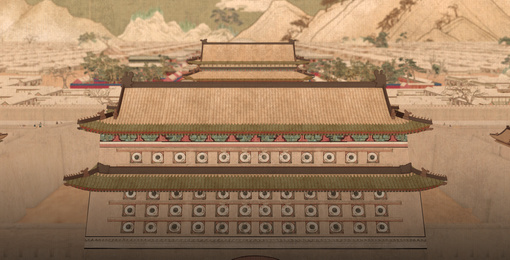Located on Beijing Central Axis, the Tian'anmen Square Complex extends south from the Tian'anmen Gate and consists of Tian'anmen Square, the Monument to the People's Heroes, the Chairman Mao Memorial Hall, the Great Hall of the People, and the National Museum of China. In planning the Tian'anmen Square Complex, the principle of respecting the centrality and symmetry was followed, demonstrating the Axis' dominant position in urban planning and construction.
Constructed in the Ming dynasty and extended in the mid-20th century, the Tian'anmen Square Complex is located at the heart of Beijing Central Axis and is an important example of its modern transformation. The square's planning respects and emphasizes the principle of the Axis' balance and symmetry. The architecture and landscape of the Tian'anmen Square Complex demonstrate China's efforts in modern times to explore and innovate on the national style in the design of public buildings in the mid-20th century. These interventions reflect important milestones in the progress of urban planning and architecture design in the modern era. Today, the Tian'anmen Square Complex is the preeminent venue for hosting state-level activities and cultural events as well as grand celebrations for the people. Ever since its inception, the square complex has witnessed the historical continuity of China's state ritual traditions.





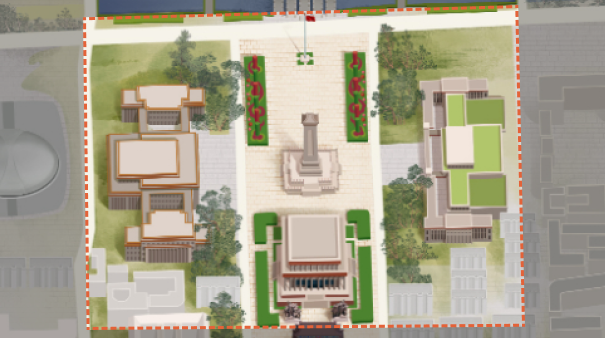
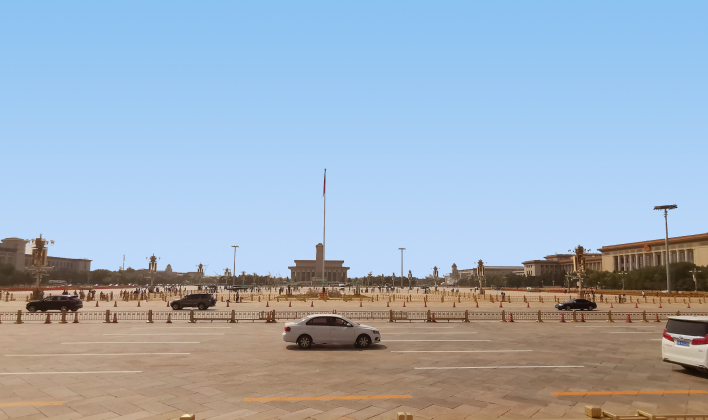
Tian'anmen Square is a vast, flat, open public space symmetrically aligned to Beijing Central Axis. The monuments lining on the axis also adhere to this symmetry. The National Museum of China and the Great Hall of the People on either side of the square reinforce the order of the Axis landscape with rigorous and symmetrical height, volume, and facade design. The square's commemorative and solemn features are expressed in the form of a complete and continuous colonnade on the facade of each building. The buildings' flat roofs are used to contrast with and accentuate the towering Monument to the People's Heroes. Traditional glazed building materials of yellow and green colors are employed decoratively and lavishly for detailing that echo the ancient convention intrinsic to the structures. In terms of architectural style, the building complex has become a representative example of exploring a modern national architectural style in the early days of the People's Republic of China.

During the Ming and Qing dynasties, the imperial square locating on the south of the Tian'anmen Gate was a place for holding major celebrations and issuing imperial edicts, and no commoner was allowed access. In early 20th century, the square has been transformed into a public area. On October 1st, 1949, the founding of the People's Republic of China was announced on the Tian'anmen Gate. On that day, 300,000 people gave a great cultural performance in Tian'anmen Square to celebrate the establishment of the People's Republic of China. By 1977, the Tian'anmen Square Complex has formed the present-day planning pattern through two major renovations and expansions. The formation of the Tiananmen Square Complex is significant to the evolution of Beijing Central Axis. The Complex shows the respect for, and inheritance of the orderly landscape established by the Axis during the city's modern development. The urban layout, volume of buildings, and the design of building facades of the square complex perpetuate the principle of "choosing the center." It has also witnessed the process of making Beijing Central Axis accessible to the public.
Sited at the current location of the Tian'anmen Square Complex, there was originally a T-shaped imperial square, which took shape in 1417. In the early 20th century, the formerly closed palace square was transformed into a public space to meet the needs of the times so that people could walk by and gather, becoming the precursor to the current Tian'anmen Square. Tian'anmen Square underwent a series of renovations and expansions from 1949 to 1959 and from 1976 to 1977 in order to add more urban functions and meet people's needs for culture and recreation. During the reconstruction, primary national monuments and public buildings were located to be placed on or along Beijing Central Axis, forming the present-day planning pattern.
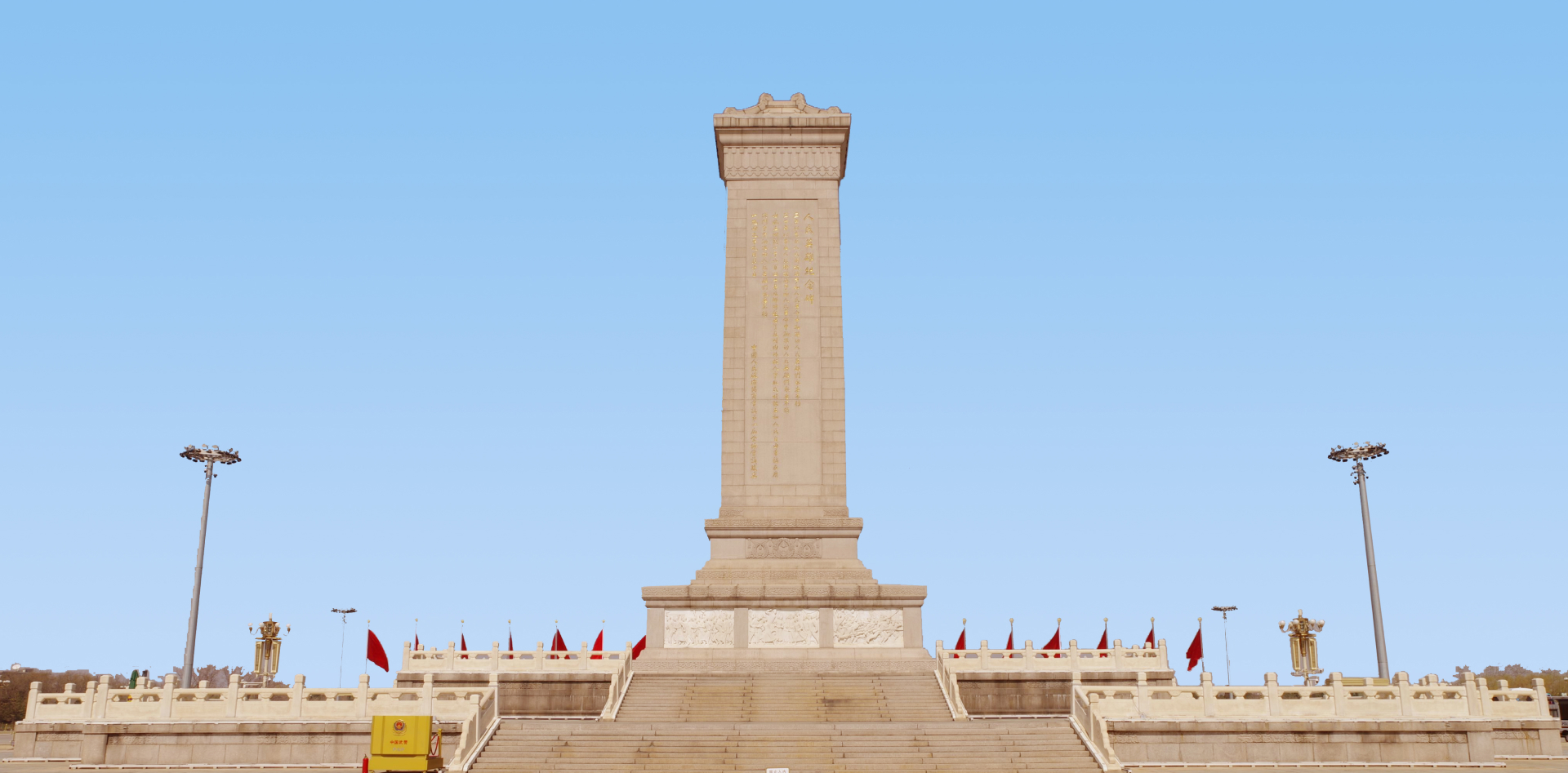
The Monument to the People’s Heroes was built to commemorate the people’s heroes.

The Great Hall of the People is the meeting place of the National People’s Congress of China.
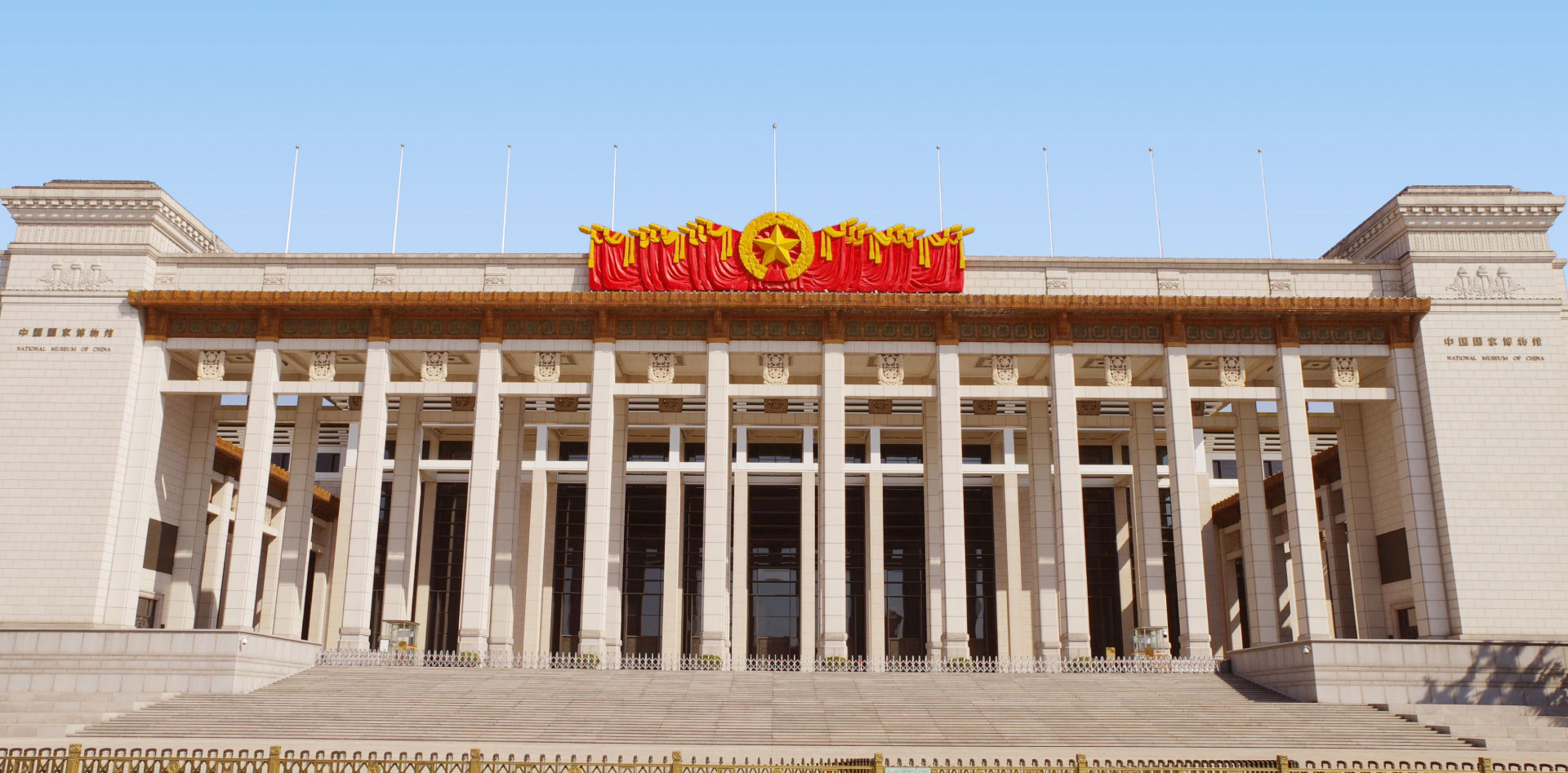
The National Museum of China is the country’s grand hall of history, culture, and art.
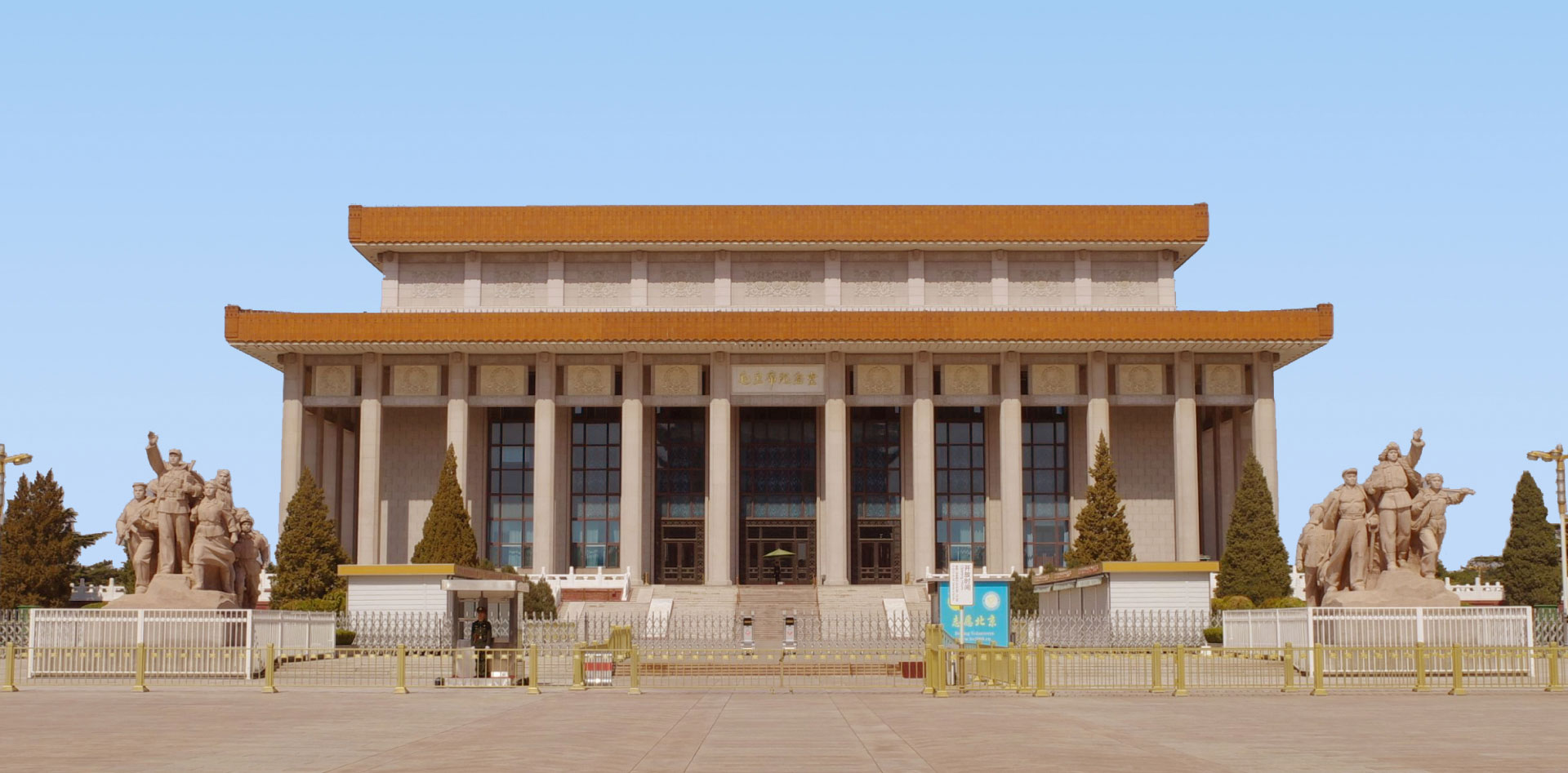
The Chairman Mao Memorial Hall was built to commemorate Chairman Mao.






